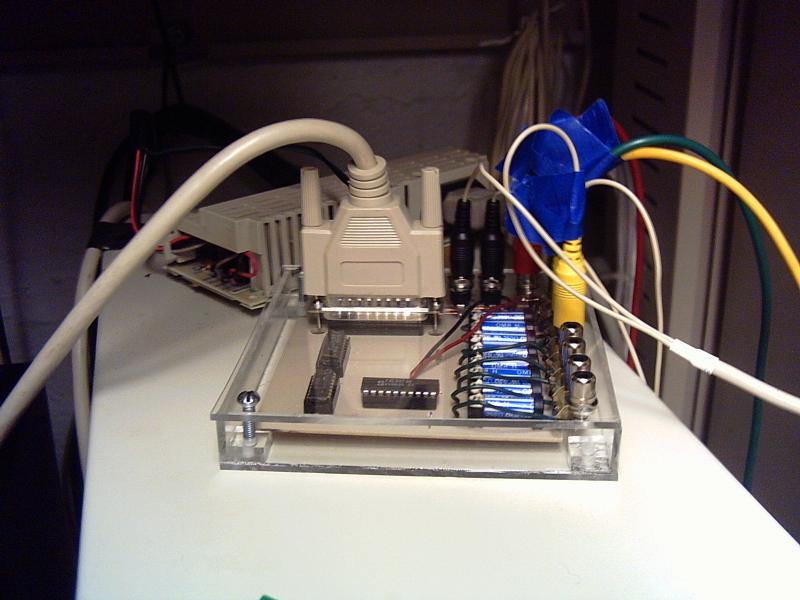

This is a video switch which my web camera uses. I have several cameras around the house. The computer with the web server has a single frame grabber card, and uses this switch (connected to the printer port) to select which camera to grab.
I actually put it together on a breadboard a great many years ago, and just used it like that. But more recently, I needed the breadboard for a different project. So that was used to inspire the Round-Tuit (tm) to get this put together right.
The PC-board was drawn using pcb, and fabricated with the blue stuff. To transfer the blue stuff onto the PC-board, I used an iron, several pieces of paper, and a piece of silicone.
The pcb file may be found here. That file is Copyright 2005 Tommy Johnson, and is distributed under the terms of the GNU General Public License.
First, I put down a piece of paper on the workbench (which is made of that weird indestructible black stuff). Then I put down the PC-board (copper side up), the blue stuff (toner side down), the silicone, another piece of paper, and finally the iron.
I then turned on the iron and left it for about 10 minutes. I moved it around a bit every couple of minutes, to try and make the heating more uniform.
I then extracted the board, and stuck it under some cold running water.
The transfer was a bit spotty. I figure try 15 minutes next time. I then cleaned it up with a sharpie, and did the ferric chloride thing.
The ferric chloride was heated to about 110 degrees (F) in the microwave first. It also works much better with exposure to air. So I ended up taking the board out of the etchant, letting it run off, and then dunking it back into the etchant.
After the board was etched, I washed it off, and removed the blue stuff with 220 grit sand paper.
Then I drilled all the holes with a drill press, and soldered everything together.
The case was built from Plexiglas, cemented together. The cover is held on with #8/32 screws which thread into blocks of 1/4" Plexiglas in the corners. I unfortunately got the clearance wrong on one of the screws, and it hits one of the RCA connectors.
I drew the front of the case (not including the screws which hold it on) using Q-cad. I then printed it out full size, and transfered the locations of the holes to the Plexiglas with a scribe. I neglected to save the qcad file...